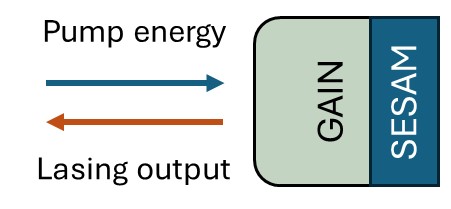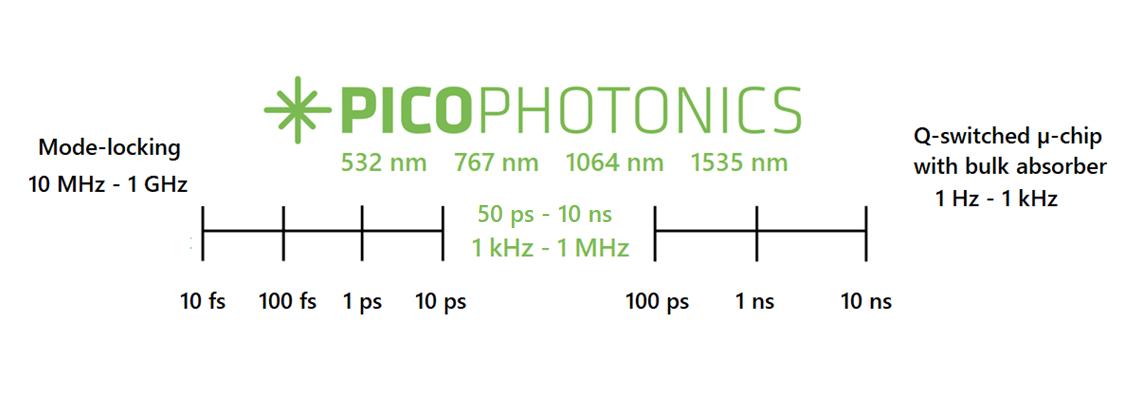Technology
Picophotonics lasers are diode pumped solid-state microchip lasers (DPSS), utilizing in-house developed semiconductor saturable absorber technology (SESAM) for
passive Q-switching. Picophotonics SESAM microchip technology enables significant pulse width reduction and increase of pulse repetition rate, while keeping the simple and robust microchip laser architecture.
 Microchip laser, formed between a glass or crystal gain material and the Q-switching element, formes pulses by causing losses into the cavity with the Q-switch.
In passive Q-switching, the Q-switch causes the losses as a function of fluence and thus the Q-switch properties have significant effect on the lasing output, defining the limits in terms of pulse duration, pulse repetition rate and pulse energy.
Microchip laser, formed between a glass or crystal gain material and the Q-switching element, formes pulses by causing losses into the cavity with the Q-switch.
In passive Q-switching, the Q-switch causes the losses as a function of fluence and thus the Q-switch properties have significant effect on the lasing output, defining the limits in terms of pulse duration, pulse repetition rate and pulse energy.
Picophotonics SESAM Q-switched microchip lasers offer a unique combination of optical performance, unmatched by any other Q-switched laser in terms of size, weight, cost and performance (SWaP-C).
The in-house tehchnology of Picophotonics allows for customization of the laser parameters to match the application needs, in terms of performance and reliability.
Check our product coverage for your application at PRODUCTS
Passive Q-switching has significant advantages compared to competing technologies in terms of compactness, scalability, performance and price. In comparison to pulsed diode lasers, Picophotonics lasers offer significant increase in performance with capabilities to several orders of magnitude higher peak powers and pulse energies. Compared to mode-locked fiber lasers, our technology can offer matching output parameters with sub-100 ps pulse duration and kilowatt peak powers with repetition rates naturally in 1 kHz to 1 MHz range, without the need for external pulse pickers.



- From low repetition rate (1 kHz – 100 kHz), avoiding the need for an external pulse picker in micro-machining applications, to MHz level for applications in imaging and micromachining.
- High peak power (close to 10 kW) directly from the seed laser, both at 1064 nm and 1535 nm.
- Over 10 µJ of pulse energy at 1535 nm, directly from the compact seed laser.
- Single-wavelength output with narrow spectral width Δλ < 0.15 nm
- Short pulse width, Δt < 100 ps at 1064 nm and 1 ns at 1535 nm.